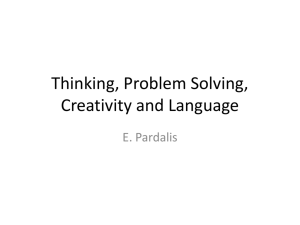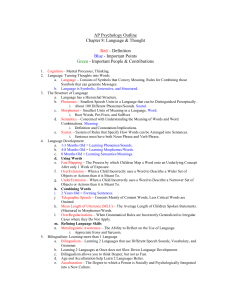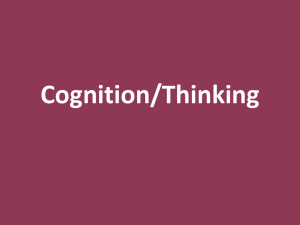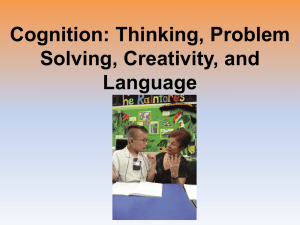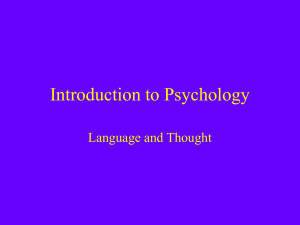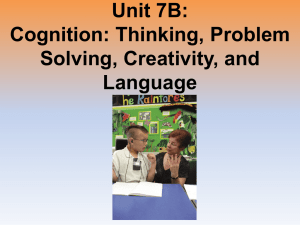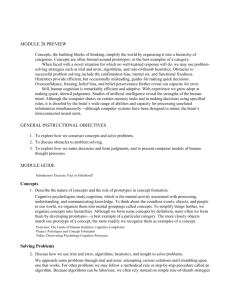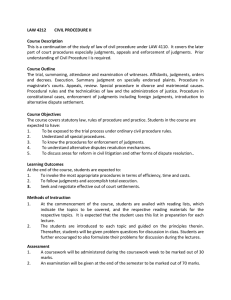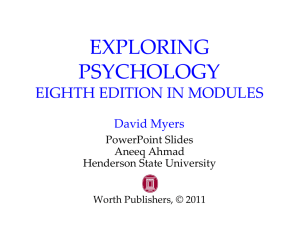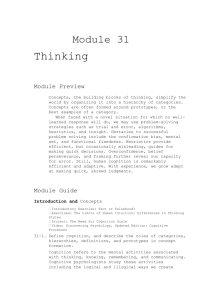File - CYPA Psychology
advertisement
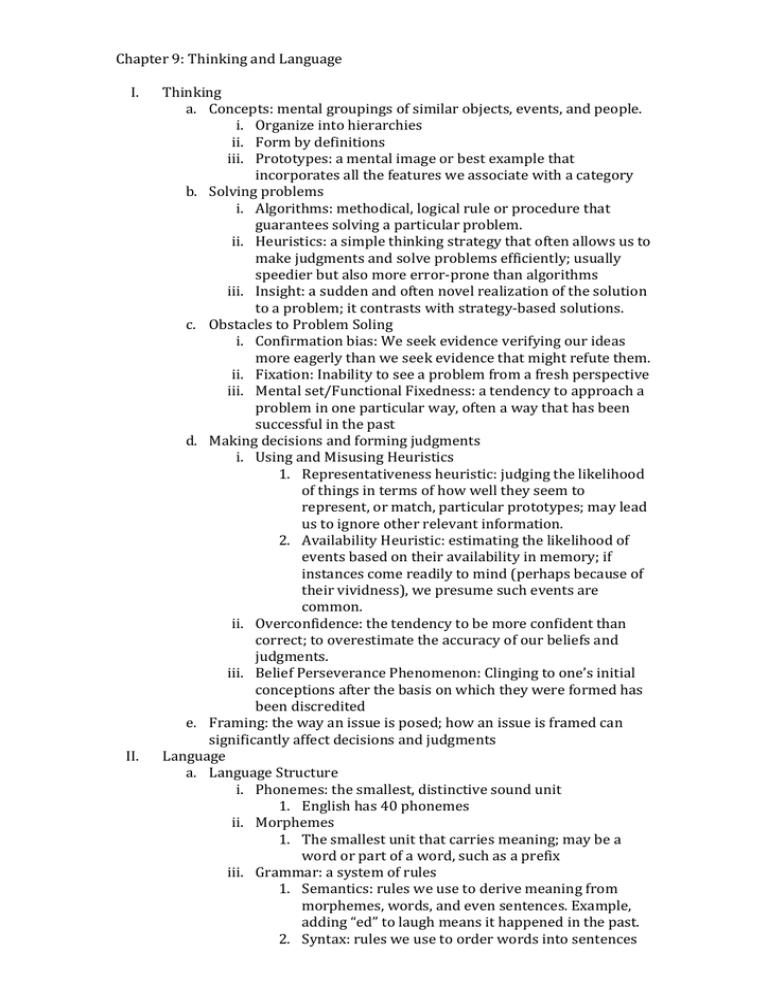
Chapter 9: Thinking and Language I. II. Thinking a. Concepts: mental groupings of similar objects, events, and people. i. Organize into hierarchies ii. Form by definitions iii. Prototypes: a mental image or best example that incorporates all the features we associate with a category b. Solving problems i. Algorithms: methodical, logical rule or procedure that guarantees solving a particular problem. ii. Heuristics: a simple thinking strategy that often allows us to make judgments and solve problems efficiently; usually speedier but also more error-prone than algorithms iii. Insight: a sudden and often novel realization of the solution to a problem; it contrasts with strategy-based solutions. c. Obstacles to Problem Soling i. Confirmation bias: We seek evidence verifying our ideas more eagerly than we seek evidence that might refute them. ii. Fixation: Inability to see a problem from a fresh perspective iii. Mental set/Functional Fixedness: a tendency to approach a problem in one particular way, often a way that has been successful in the past d. Making decisions and forming judgments i. Using and Misusing Heuristics 1. Representativeness heuristic: judging the likelihood of things in terms of how well they seem to represent, or match, particular prototypes; may lead us to ignore other relevant information. 2. Availability Heuristic: estimating the likelihood of events based on their availability in memory; if instances come readily to mind (perhaps because of their vividness), we presume such events are common. ii. Overconfidence: the tendency to be more confident than correct; to overestimate the accuracy of our beliefs and judgments. iii. Belief Perseverance Phenomenon: Clinging to one’s initial conceptions after the basis on which they were formed has been discredited e. Framing: the way an issue is posed; how an issue is framed can significantly affect decisions and judgments Language a. Language Structure i. Phonemes: the smallest, distinctive sound unit 1. English has 40 phonemes ii. Morphemes 1. The smallest unit that carries meaning; may be a word or part of a word, such as a prefix iii. Grammar: a system of rules 1. Semantics: rules we use to derive meaning from morphemes, words, and even sentences. Example, adding “ed” to laugh means it happened in the past. 2. Syntax: rules we use to order words into sentences b. Language Development i. When do we learn language? 1. Receptive language: the ability to comprehend speech 2. Productive language: ability to produce words a. Babbling: 4 months of age b. 10 months of age: babies becomes functionally deaf to sounds outside of their native language(s) c. 12 months: one-word stage d. 24 months: two word stage: telegraphic speech ii. Explaining language development 1. Skinner: Operant Learning 2. Chomsky: Inborn Universal Language a. LAD b. Universal grammar 3. Statistical Learning and Critical Periods a. “sensitive period” b. implications for deaf children iii. The Brain and Language 1. Aphasia: impairment of language, usually caused by left hemisphere damage a. Broca’s area: damage here disrupts speaking b. Wernicke’s area: damage here causes meaningless speech production and disrupts understanding. c. Angular gyrus: damage here disrupts reading aloud. “For example, adults who learned a second language early in life use the same patch of frontal lobe tissue when recounting an event in either the native or the second language. Those who learned their second tongue after childhood display ac- tivity in an adjacent brain area while using their second language (Kim et al., 1997).” III. IV. Thinking and Language a. Benjamin Lee Whorf: Linguistic determinism i. “Language itself shapes a man’s basic ideas.” ii. Bilinguals report having different senses of self iii. Number iv. Color v. Tenses b. “It’s better to spend your fantasy time planning how to get somewhere than to dwell on the imagined destination.” Animal Thinking and Language (see book for details, not covered in this class.)
